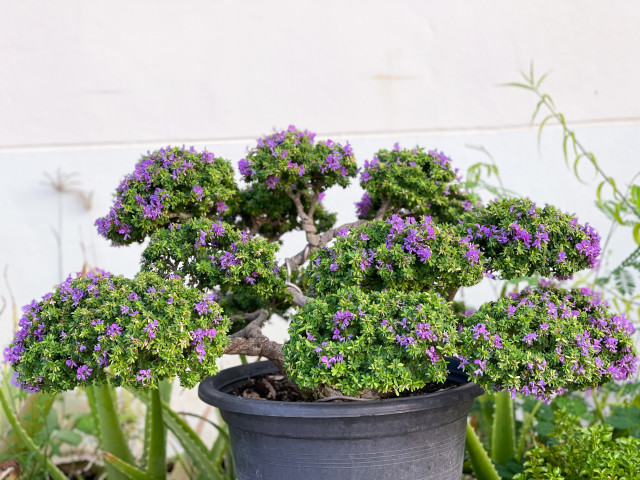Preventing Disease for Bonsai Tree Care: Prevention is the best medicine, as they say. And it’s true when it comes to taking care of your bonsai tree. Trees in the wild are exposed to all sorts of pests and diseases, but a well-cared-for bonsai can thrive for years with minimal problems.
There are two key things to remember when it comes to preventing disease in bonsai: proper watering and good air circulation.
Proper watering is essential for preventing all sorts of problems, including root rot, a common killer of bonsai trees. When you water your tree, make sure the soil is evenly moistened. Allow the water to run through the drainage holes in the bottom of the pot, and then empty any excess water from the drip tray. Water early in the day so that the leaves have time to dry before nightfall.
Good air circulation is also important for preventing disease. Be sure to place your tree in an open area where it will get plenty of airflow. If you live in an area with high humidity, you may need to take extra measures to ensure good air circulation, such as using a fan or placing the tree on a potting rack.
In addition to proper watering and good air circulation, there are a few other things you can do to help prevent disease in your bonsai tree:
Choose a healthy tree to begin with. Avoid trees that have signs of pests or disease, such as discolored leaves or sticky sap.
Inspect your tree regularly for signs of problems. If you see anything out of the ordinary, take action immediately.
Prune dead and dying branches. This will help prevent the spread of disease.
If your tree does become infected with a disease, try to identify the problem and take steps to treat it right away. Many books and websites can help you diagnose and treat common bonsai diseases. With proper care, your bonsai tree should be healthy for years to come!
Good bonsai tree treatment is essential for the prevention of illness. A lot of bonsai trees that have been well looked after will certainly not succumb to illness as excellent growing problems have allowed them to develop vitality as well as durability. On the other hand, those that have been subjected to inadequate expanding conditions like over-watering, poor dirt or otherwise enough light are under some degree of anxiety and are therefore extra prone to illness as well as infection from insects.
Systemic pesticides can be used as a safety measure against illness. These are splashed onto the foliage and taken into the sap stream, which disperses the therapy throughout the whole plant. These insecticides should not be made use of routinely though as they are eco-unbalanced, expensive as well, and develop resistance within the plant to ensure that when the insecticide is truly required to treat an issue, it may be ineffective.
If you presume that a condition or parasite has actually affected your bonsai, make sure you carefully evaluate your tree. Seek discoloration of the fallen leaves, holes in the leaves, lost foliage, the evidence of parasites, and anything else unusual that will certainly assist you in identifying the trouble.
Treatment will certainly depend completely on the source of the issue. If you are not sure of just how to treat your bonsai, talk to someone at your neighborhood nursery for advice or look for bonsai enthusiasts online who may have the ability to answer your inquiries.
Once you have dealt with the issue successfully try to identify methods which you can stop it from taking place once again.
